

Marvel Comics Presents ran for 175 issues from 1988 until 1995. Each issue included four eight-page stories with typically two or three on-going features (and no ads). It spotlighted some of the leading creators of mainstream comics over a period of precipitous economic growth and even more rapid decline. Reading through it is an opportunity to revisit any number of weird aspects of 90s superhero comics. This blog is a primitive, oddly regimented, manifestly scattershot crawl through an often disappointing but occasionally splendid comic. All image copyrights are Marvel's. Issue credits linked below. Updated on Wednesdays.
Marvel Comics Presents #7: Late November 1988(11.06.19)
Credits: grandcomicsdatabase
In an odd turn of events, each of the featured characters ends up taking a dip underwater on this cover. The focal of the rear is a Heap-ish Man-Thing emerging from the depths as a kind of mossy mountain. Bob Layton's general idea is sound enough, but falls short in execution largely on account of peculiar swathed of bubbles oddly strewn about to tie things together. The Wolverine front cover shades toward the stiff side and, somewhat remarkably, ends up being upstaged by the throwback "Tales to Astonish" Namor cornerbox. It's a deft retro touch which catches the eye partly on account of its iffy yet bold foreshortening.
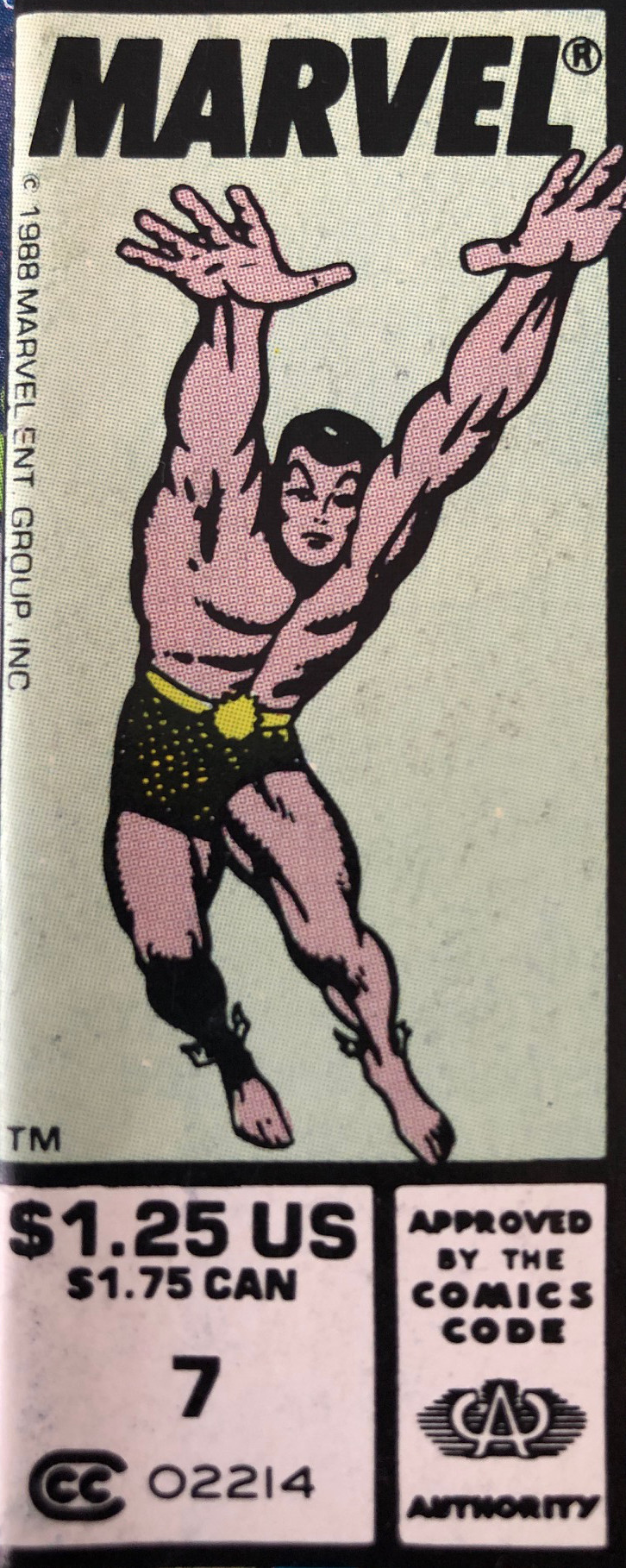
A. Wolverine, "Save the Tiger" [7/10]
Wolverine and Jessan begin to turn the tables on Roche's crime syndicate with a lengthy, atmosphere-building detour through Madripoor. Specifically, we find the city and Lowtown pushing back against corruption via some pointed, street-level crime beats. There's been some deliberate, nested storytelling here and the art team are sticking with what works: initial bold splash where Janson throws out every possible line weight, sparse and scratchy panels--Buhalis nicely subs for Orzechowski this issue--and gritty, schematic action panels. There's some nice work here from Oliver to enfold some funky colors into what might well have been a drab night setting. Narratively, there's not much here that hinges on Logan's specific involvement, but this proves more refreshing than a symptom of aimless storytelling. Alert: Razor Fist is back and his arms are crossed again!
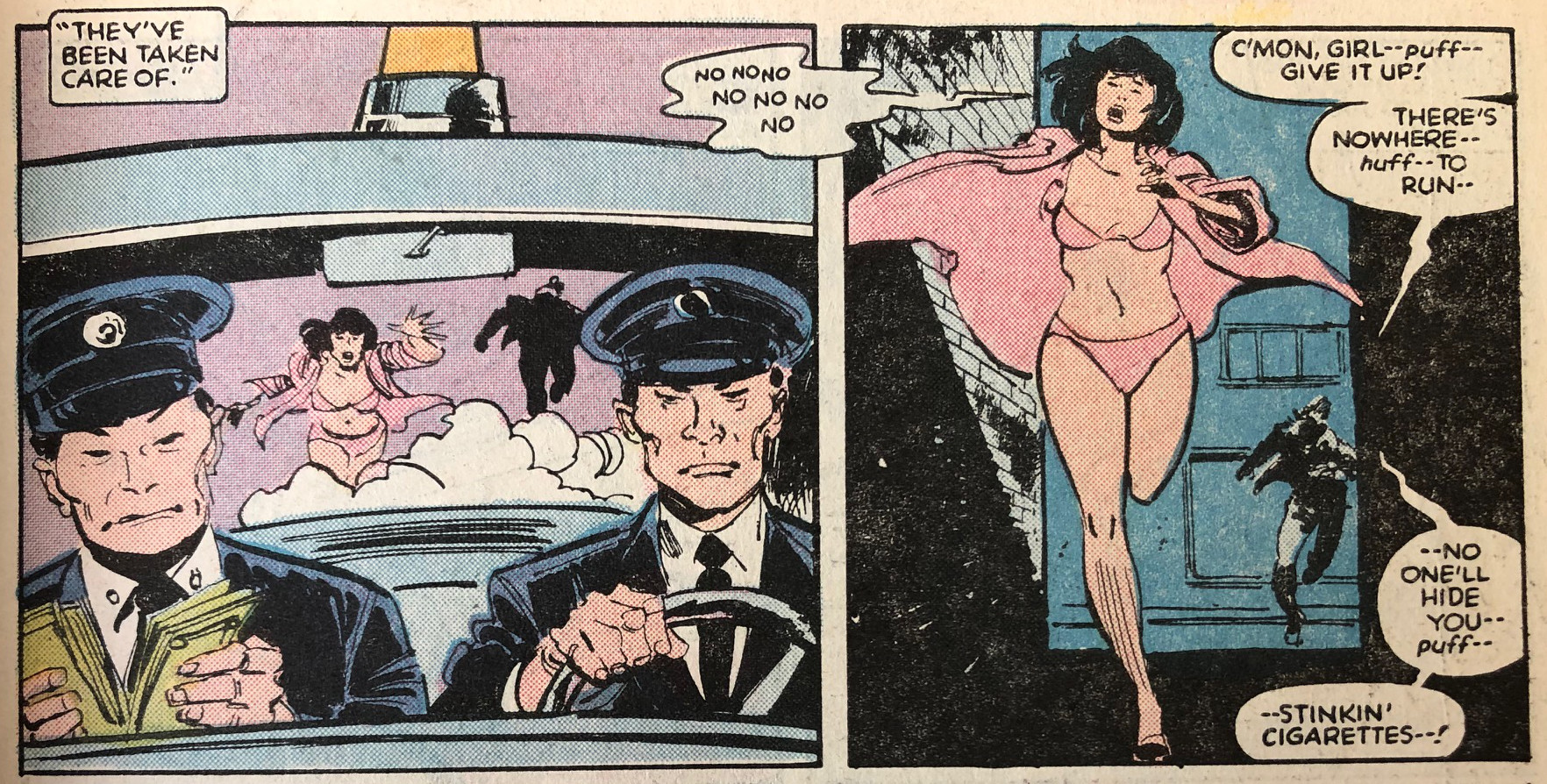
B. Man-Thing, "Elements of Terror" [7/12]
The upwards trajectory of this story continues. The movement of the military pieces and the mad science undercurrents continue to weave together and there's a visual economy to the writing with tertiary characters returning to swiftly but meaningfully into view. Sutton's next-generation "super soldier" are anatomical oddities that look like Durer's rhinoceros cobbled together with housing insulation and offal, but, most effectively, we find Gerber and Sutton cordoning off the high action moments into tight 2x5 grids or stacked vertical rows, which make interest tempo variations and tightly plotted scenes--most notably, an abduction, an assassination, and a lab report.
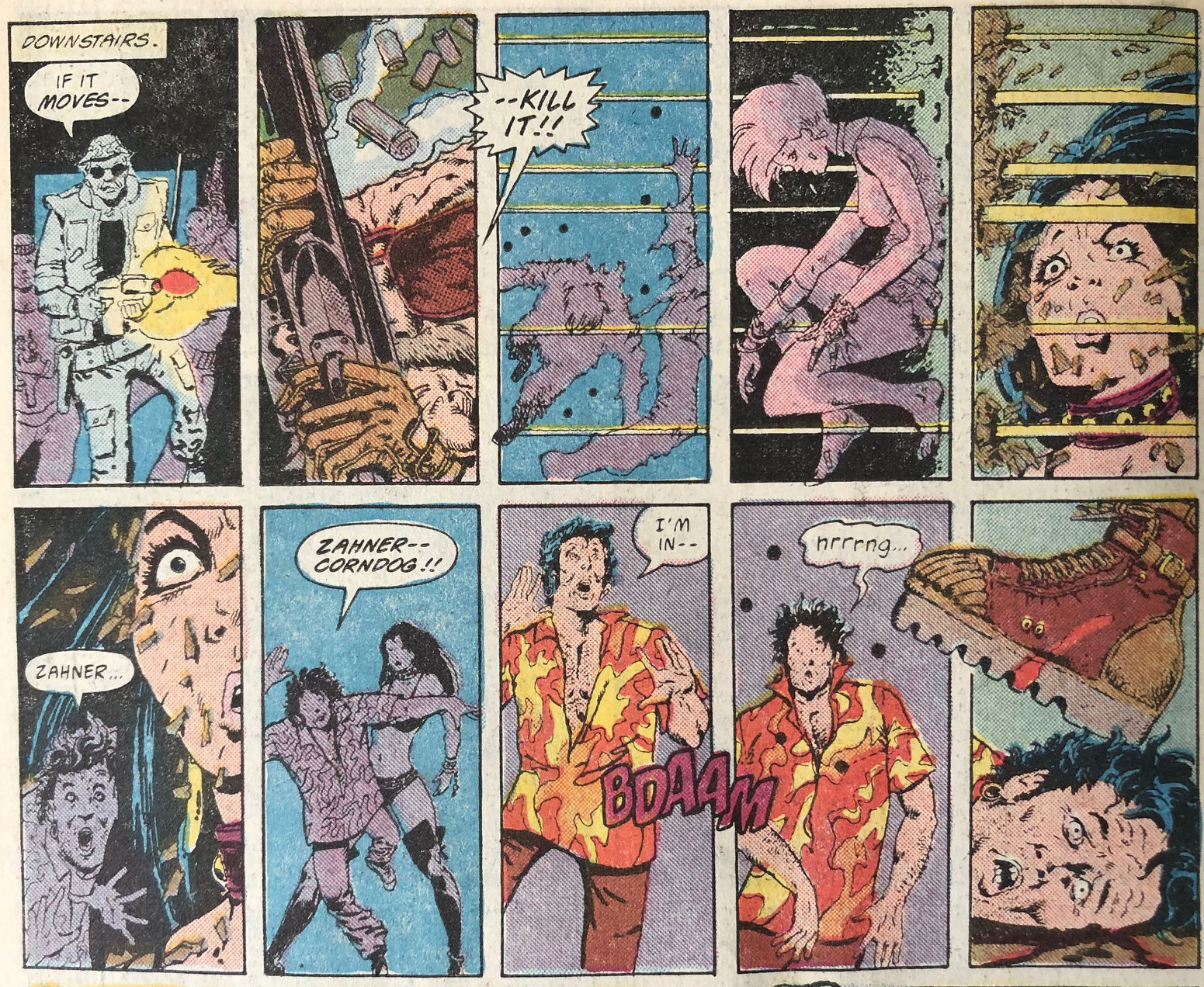
C. Shang-Chi, "Crossing Lines" [7/8]
This is nominally climactic stuff, since we finally see Shang-Chi and the Cat in combat against some goons, but the action is oddly abbreviated. We also find Shang-Chi squaring off against the underdeveloped heavy, Argus. He remains a mystifying choice for a villain, given his DC Turtle Man vibe, tonal anomalousness, and high school drama teacher outfit. The dubious coherence of the underworld-terror narrative is compounded by the fact that it eats over half of the story with Leiko receiving only a single panel's attention. Grindberg's bodies, mid-action, have joints doubling-back and mushing together to obscure what ought to be focal, kung-fu physicality. How and why did this feature break down so badly?
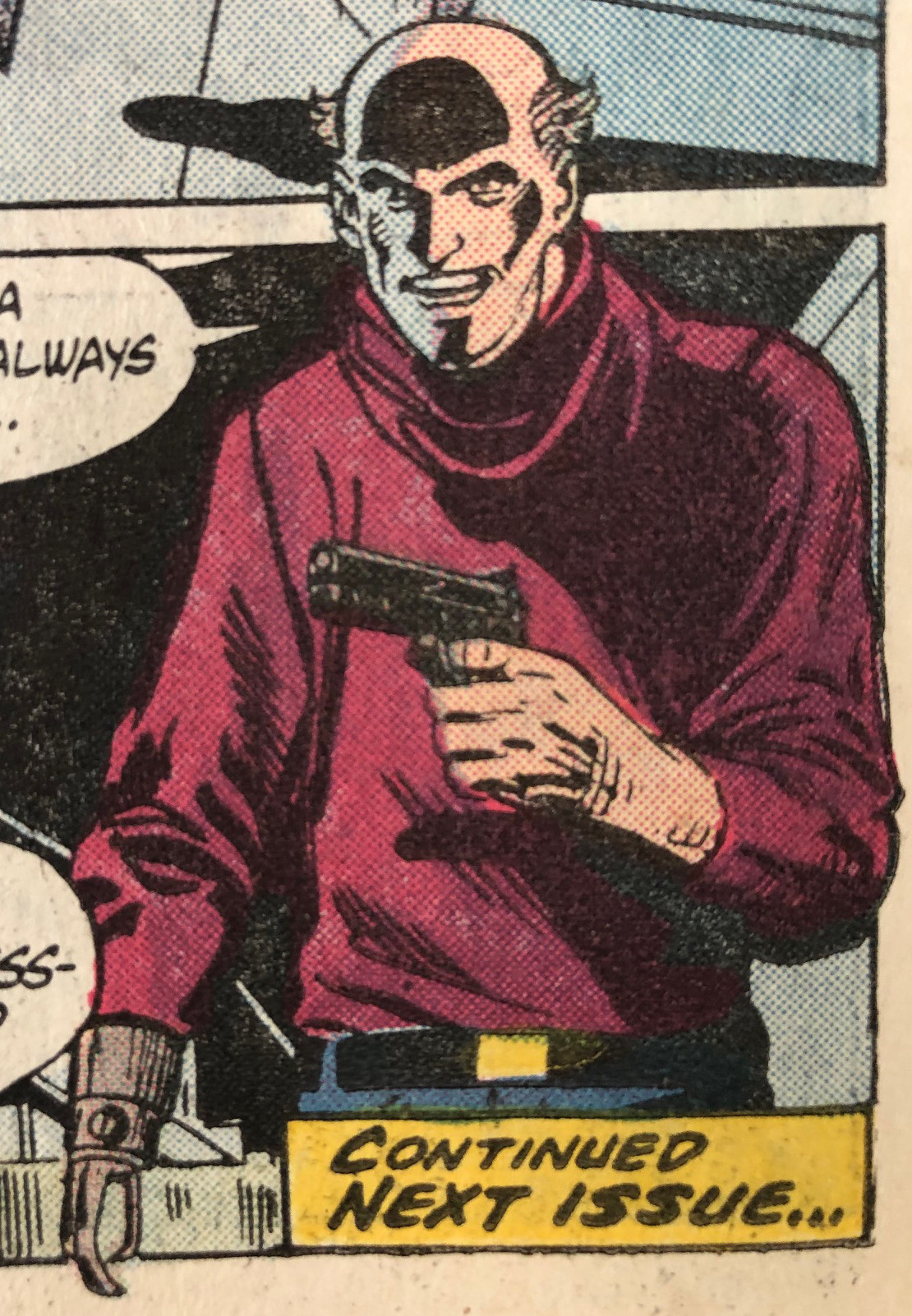
D. Namor, "From Sea to Deadly Sea"
Unironically retro, this is a straightforward Ditko piece with few hints of his late career didacticism. Visually, he treats the undersea realm as interchangeable with an astral plane or outer space, healing curved abstractions upon sparse forms. Namor has no deep intrigue here, but swiftly dispatches some Atlantean thugs in a pleasantly brisk tale. There's an undeniable campiness to Namor impaling a spiny mutant upon his own plentiful, manifestly inconvenient spines, but the story here comports with the tradition of short features that few of the young MCP writers were steeped in. Given all the 80s trends on display elsewhere in recent issues, this proves a nostalgic, credible treat.
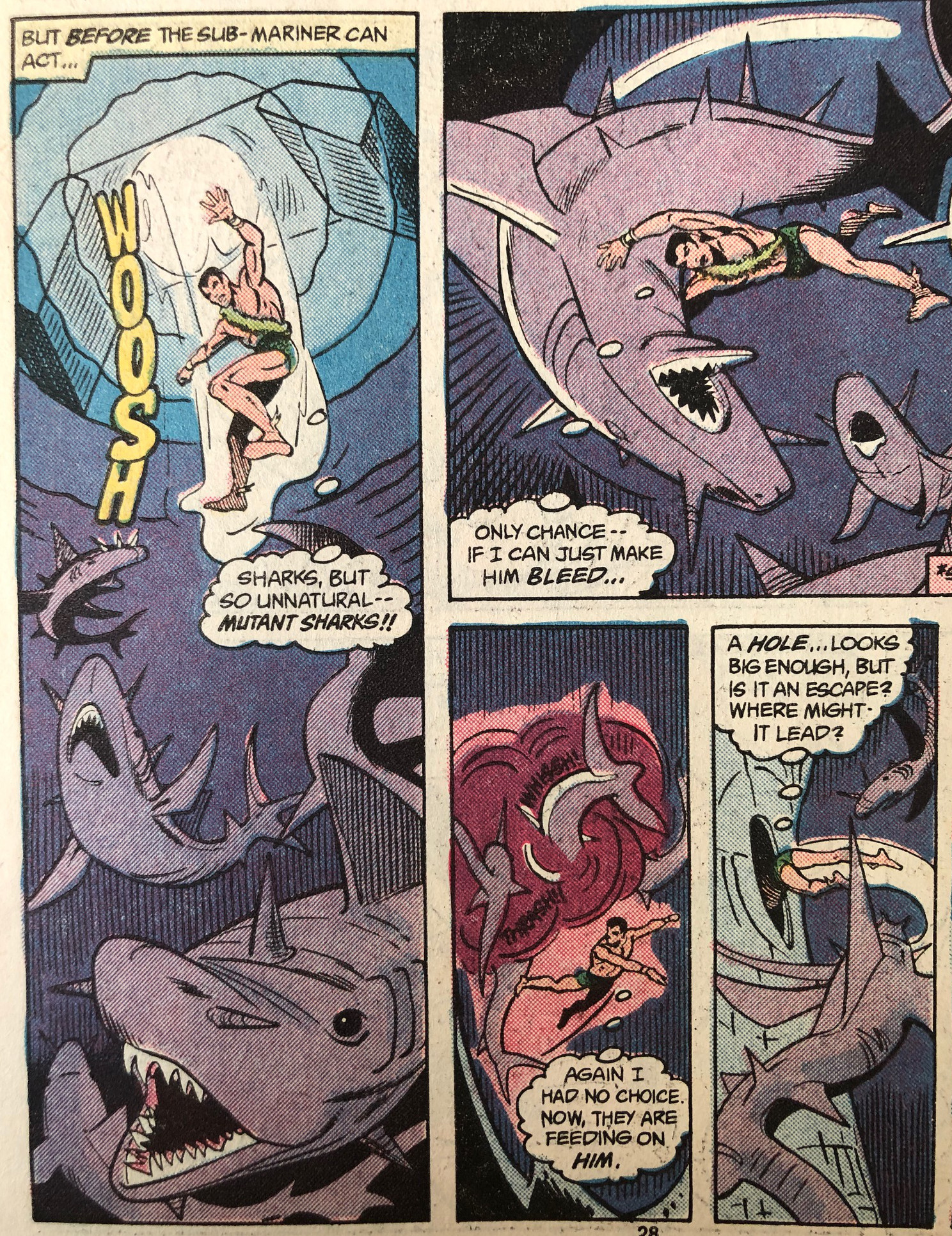
Power Ranking: Man-Thing (A-), Wolverine (B), Namor (B), Shang-Chi (D)